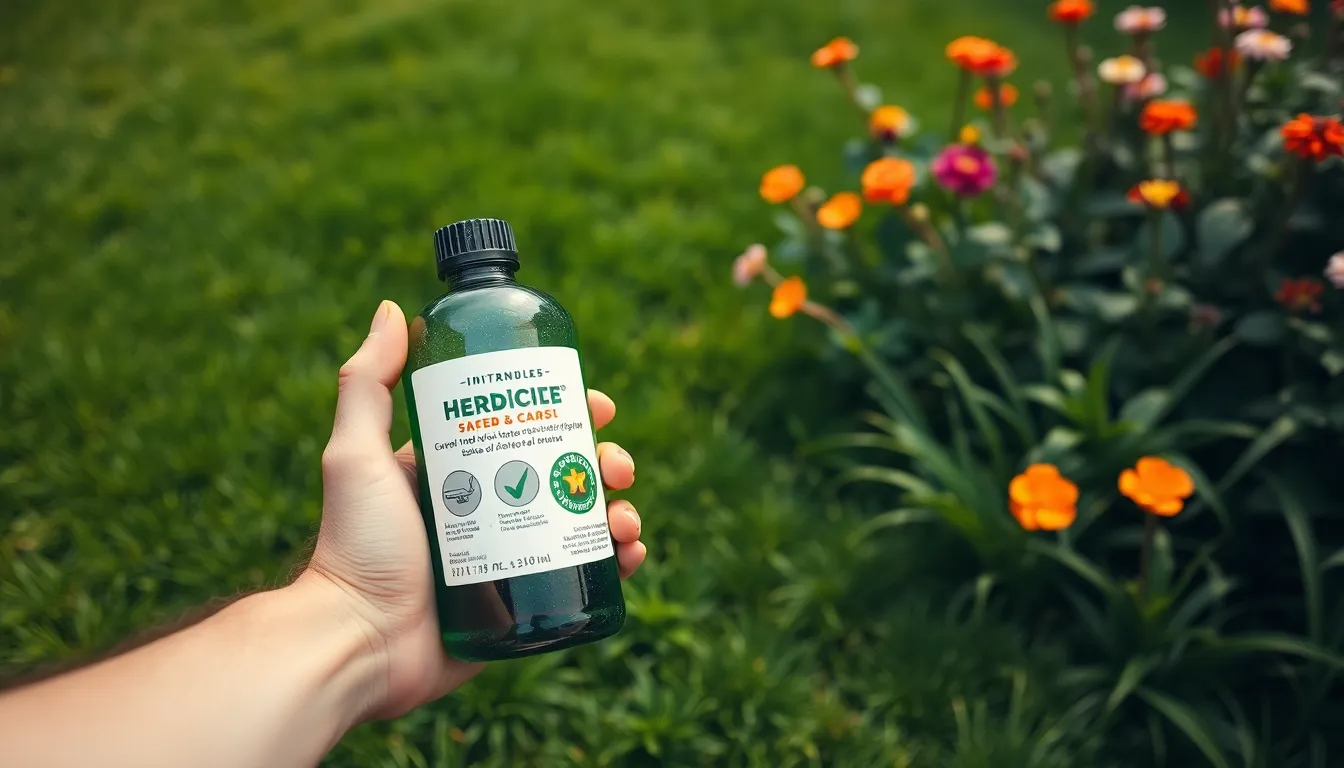Creeping Charlie, the uninvited guest in many lawns, can turn a pristine yard into a wild jungle faster than you can say “weeds be gone.” This pesky plant, with its charmingly round leaves, has a knack for taking over and making homeowners question their life choices. But fear not! The right herbicide can send this invader packing, restoring peace to your green oasis.
Choosing the best herbicide for creeping Charlie isn’t just about picking the first bottle off the shelf. It’s about arming yourself with the knowledge to win the battle against this relentless foe. From selective herbicides that target the invader without harming your precious grass to the best application techniques, this guide will help you reclaim your yard and give Creeping Charlie the boot—without breaking a sweat.
Table of Contents
ToggleOverview of Creeping Charlie
Creeping Charlie presents significant challenges for lawn maintenance. This invasive weed can quickly spread, disrupting the beauty of healthy grass.
Identification and Characteristics
Identifying Creeping Charlie involves recognizing its distinctive heart-shaped leaves, which feature scalloped edges. They appear green and glossy, forming dense mats close to the ground. This perennial weed can produce small, trumpet-shaped purple flowers during the spring. Growth typically ranges from 1 to 3 inches tall. The stems root at the nodes, allowing it to spread rapidly across lawns.
Growth Patterns and Common Issues
Growth patterns of Creeping Charlie show its preference for shady and moist areas. This weed often flourishes in neglected parts of gardens, where grass struggles due to low light conditions. Homeowners frequently encounter issues such as lawn thinness and poor drainage due to Creeping Charlie’s extensive root system. Additionally, this plant competes aggressively with desirable grass species, diminishing their health and aesthetic appeal.
Criteria for Selecting the Best Herbicide

Selecting an effective herbicide requires careful consideration of various factors. Understanding these criteria helps achieve optimal results in eliminating Creeping Charlie while protecting desirable plants.
Effectiveness and Active Ingredients
Effectiveness hinges on the active ingredients in the herbicide. Herbicides containing triclopyr or glyphosate show high efficacy against Creeping Charlie due to their systemic action. These ingredients target the plant’s root system, ensuring complete control. Products with a combination of active ingredients may also enhance effectiveness. Always look for formulations specifically labeled for Creeping Charlie to guarantee results.
Safety for Other Plants and the Environment
Safety considerations play a vital role in herbicide selection. Select products that are safe for surrounding plants, particularly those labeled as selective herbicides. Many options safely eliminate Creeping Charlie without harming desirable grass or shrubs. Environmental safety is equally important. Choose herbicides that minimize runoff and break down quickly in the environment. Always review application instructions carefully to protect non-target species and maintain ecological balance.
Recommended Herbicides for Creeping Charlie
Several effective herbicides target Creeping Charlie while being mindful of lawn health. Homeowners should consider the following options:
Product 1: Detailed Review
Triclopyr-based products like Ortho GroundClear are highly effective. This systemic herbicide penetrates and disrupts the plant’s root system. Its application is simple, and results are usually visible within weeks. When using, ensure to follow the manufacturer’s guidelines for optimal results. Triclopyr’s potency effectively minimizes the spread of Creeping Charlie without harming surrounding grass.
Product 2: Detailed Review
Glyphosate products, such as Roundup, also serve as effective solutions. Their non-selective nature means they target all green plants, so extreme care is necessary. Apply glyphosate directly to the leaves for maximum absorption. Homeowners appreciate the quick action of glyphosate, typically seeing results within a week. Ensure protective measures are in place for desirable plants nearby.
Product 3: Detailed Review
Selective herbicides like Tenacity are designed to target Creeping Charlie without harming desirable grass. This product’s unique formulation disrupts the weed’s growth while allowing other plants to thrive. Application timing significantly influences effectiveness; targeting weeds in the early growth stage yields better results. Users often find Tenacity’s versatility advantageous for integrated lawn care strategies. This option stands out for its low environmental impact, making it appealing for conscientious homeowners.
Application Tips for Herbicides
Applying herbicides effectively maximizes their impact on Creeping Charlie while minimizing harm to desirable plants. Timing and technique play pivotal roles in achieving successful results.
Best Time for Application
Targeting the right season enhances herbicide effectiveness. Spring, when Creeping Charlie actively grows, proves ideal for application. Optimal temperatures usually hover between 65°F and 85°F, fostering better absorption. Early fall also offers favorable conditions as the plant prepares for winter. Avoid applying herbicides during extreme weather conditions, such as hot, dry days or when rain is imminent. Higher moisture promotes better uptake, so consider scheduling applications after rainfall.
Proper Methods of Application
Using the appropriate application method ensures thorough coverage. Spraying with a backpack sprayer or a handheld pump sprayer achieves even coverage across affected areas. Choosing a calm day, when winds are minimal, prevents drift to non-target plants. Follow product instructions carefully regarding dilution ratios and application rates. For granular herbicides, uniform application over infested areas provides effective results. Regularly check for missed patches during the application process, as thorough treatment aids in long-term control of Creeping Charlie.
Successfully managing Creeping Charlie requires the right approach and effective herbicides. By understanding the specific characteristics of this invasive weed and selecting appropriate products like triclopyr or glyphosate, homeowners can reclaim their lawns. It’s crucial to prioritize safety for surrounding plants and the environment during application.
Timing and technique play significant roles in achieving the best results. Following guidelines for application ensures that the herbicide targets Creeping Charlie effectively while minimizing damage to desirable grass. With the right strategy in place, homeowners can restore their lawns to a healthy and vibrant state, free from the challenges posed by Creeping Charlie.


